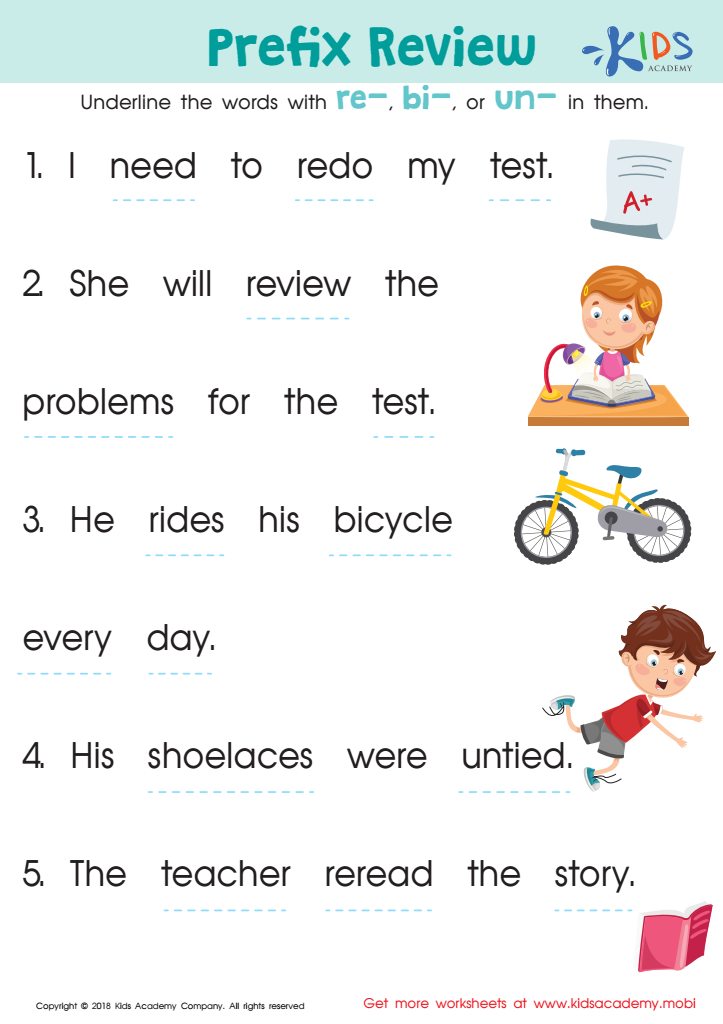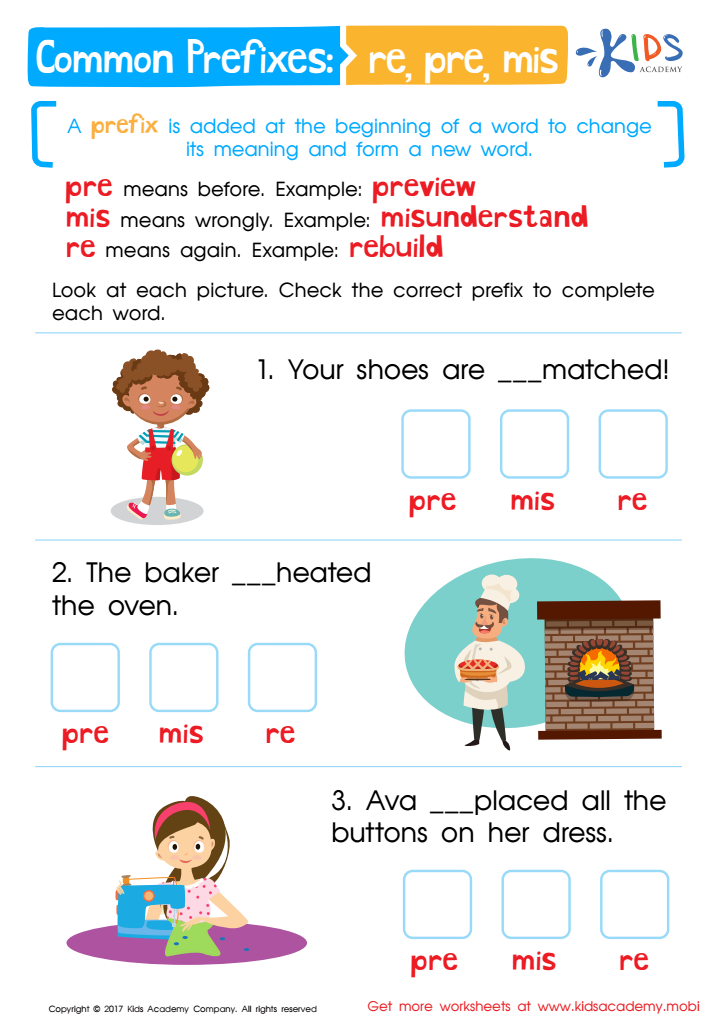Understanding prefixes Worksheets for Ages 6-8
8 filtered results
-
From - To
Explore our engaging "Understanding Prefixes Worksheets" designed specifically for children aged 6-8! These worksheets help young learners grasp the concept of prefixes, enhancing their vocabulary and reading skills through fun and interactive activities. Each worksheet provides colorful visuals and clear explanations, making it easier for kids to identify common prefixes and their meanings. With various exercises, your child will practice applying prefixes to words, fostering a deeper understanding of language structures. Perfect for homeschooling and classroom settings, these worksheets support developing essential literacy skills in a playful, approachable manner. Make learning prefixes enjoyable and effective today!


Prefix Review Worksheet


Prefix pre– and Suffix ful– Worksheet


Prefix and Suffix Worksheet For Grade 3


Prefix Un- Worksheet


Common Prefixes Worksheet: RE, PRE, MIS


Reading: Find the Prefixes Worksheet


Prefix Practice Worksheet: DIS, IM, UM


Prefix Re- Worksheet
Understanding prefixes is crucial for children aged 6-8 as it lays the foundation for their reading, writing, and overall language skills. Prefixes are word parts added to the beginning of words to change their meanings. By learning about them, children can decode unfamiliar words more easily, boosting their confidence in tackling challenging texts.
Knowing prefixes allows young learners to expand their vocabulary. For example, when they understand the prefix "un-" means “not,” they can deduce that "happy" becomes "unhappy." This enables children to infer meanings rather than rely solely on memorization, enhancing comprehension and critical thinking.
Additionally, familiarizing children with prefixes fosters a love for language exploration and encourages creative writing. When they embrace the nuances of word formation, they become more expressive and articulate.
Furthermore, strengthening word comprehension early on helps prepare students for later learning. As they progress, they’ll encounter complex texts where prefixes play an essential role. By investing time in prefix education, parents and teachers can support literacy development, assist in academic achievement, and create lifelong learners who engage eagerly with language. Ultimately, the impact of understanding prefixes resonates beyond the classroom, impacting children's communication skills throughout their lives.
 Assign to My Students
Assign to My Students




















